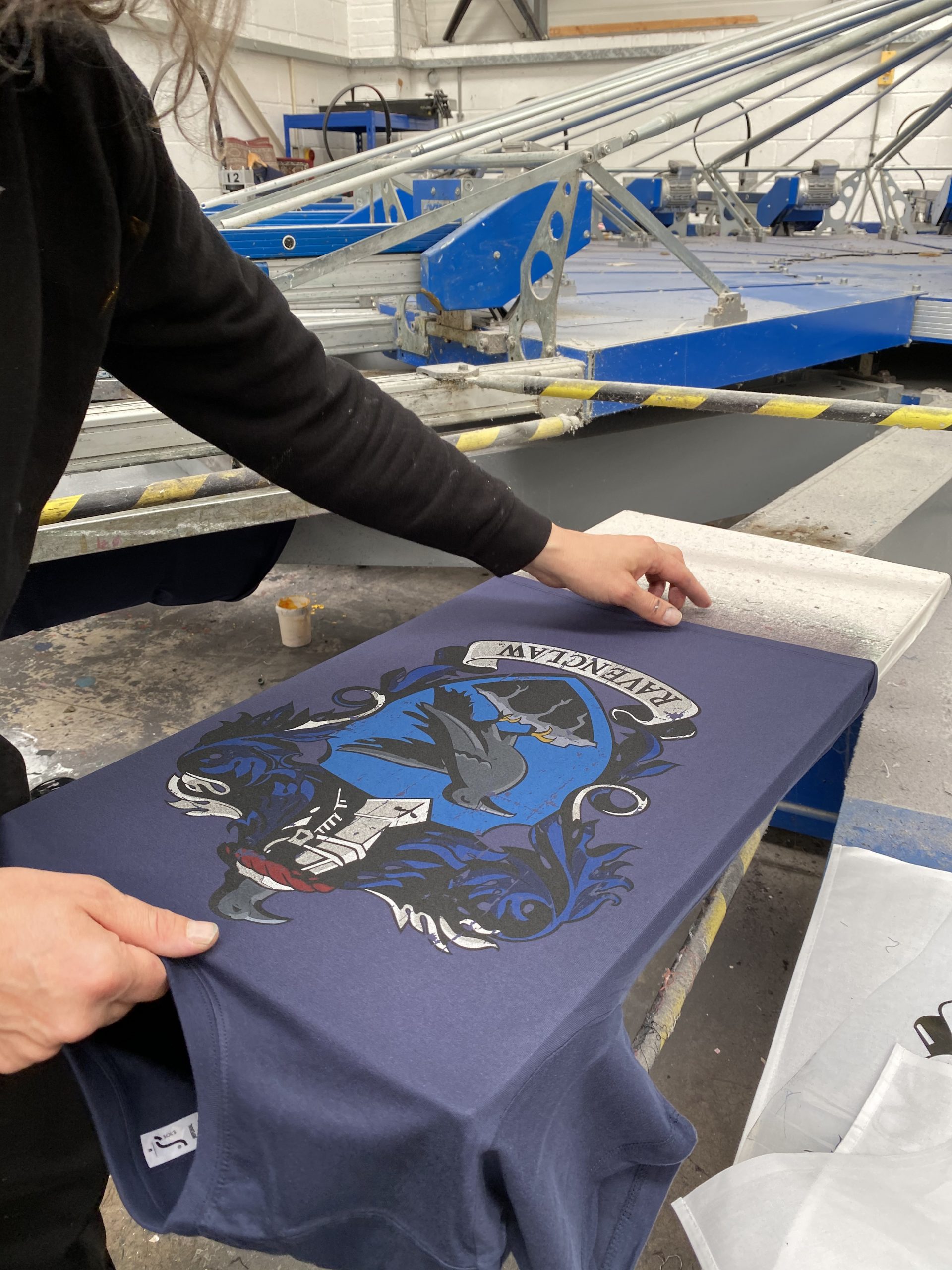ChatGPT said: How 10:9 Design Texas combines creativity and durability in screen printing
The Crucial Guide to Recognizing Screen Printing and Its Versatile Makes use of
Screen printing has a rich history that dates back to ancient times, developing into an innovative strategy made use of across different markets today. This overview explores the details of the screen printing procedure, detailing its applications in marketing, home, and style design - 10:9 Design Embroidery. Recognizing these principles can open up innovative capacity for both commercial and artistic jobs. The adhering to sections will certainly disclose essential tips and methods to enhance one's screen printing undertakings
The History of Screen Printing
Although screen printing has origins that trace back centuries, its development shows the technological and creative innovations of different societies. Originating in ancient China, the technique was at first utilized for embellishing textiles and later spread to Japan, where it came to be indispensable to Ukiyo-e woodblock printing. The technique shifted to Europe in the 18th century, where it acquired popularity amongst craftsmens and industrial printers. The innovation of photo emulsion in the 20th century revolutionized screen printing, allowing for even more elaborate styles and greater effectiveness. Musicians like Andy Warhol better drove its popularity, utilizing the medium to produce iconic works that blended commercialism and art. By the late 20th century, screen printing had established itself as a flexible strategy, utilized in vogue, advertising, and great art. Today, it proceeds to progress, integrating digital modern technology and expanding its applications throughout numerous industries.
The Screen Printing Refine Explained
Screen printing changes imaginative visions right into substantial designs with a collection of accurate actions. Initially, a picture is developed and after that transferred onto a screen, commonly made of fine mesh material extended over a framework. A light-sensitive solution is related to the screen, which is exposed to light, hardening in areas not covered by the image. After cleaning out the unhardened emulsion, a stencil is developed.
Next off, the screen is positioned over the substratum, whether it be material, paper, or another material. Ink is after that pressed with the open areas of the stencil making use of a squeegee, transferring the style onto the substrate below. This procedure can be duplicated for numerous colors, needing different displays for each color. The printed item is healed making use of warmth to guarantee the ink adheres appropriately, resulting in a durable, vivid style ready for usage.
Types of Screen Printing Techniques

Furthermore, specialized techniques, such as discharge screen printing, eliminate dye from the material to create softer prints, while foil screen printing uses metallic foil to accomplish a glossy surface (10:9 Design Embroidery). Each technique supplies unique qualities, accommodating numerous creative needs and manufacturing scales, inevitably increasing the possibilities within the screen printing domain
Applications of Screen Printing in Different Industries

Additionally, the signage and advertising and marketing industries use screen printing for producing distinctive displays and banners. This method permits bold shades and elaborate styles that capture focus. In electronics, screen printing is utilized for using conductive inks to motherboard, vital for element links. The home decoration market accepts screen printing to create distinct layouts on fabrics and wall surface art. website In general, screen printing functions as an important tool throughout diverse fields, boosting items with individualized and aesthetically enticing graphics.
Tips for Effective Screen Printing Projects
While embarking on a screen printing task, careful interest to information can significantly boost the last outcome. First, choosing high-quality products is important; this includes the screen, inks, and substratums. Utilizing appropriate mesh matters can influence ink deposition and detail resolution. Prep work is just as essential; detailed cleansing of displays and appropriate exposure times ensure crisp prints.
Next off, accurate registration is critical for multi-color prints. Using placement devices can aid accomplish precise layering. Furthermore, testing prints on scrap materials prior to production helps identify potential concerns without wasting resources.

Frequently Asked Questions
What Products Are Ideal for Screen Printing on Textile?
Cotton and polyester blends are ideal for screen printing on textile as a result of their sturdiness and ink absorption. Furthermore, specialized textiles like silk or canvas can generate one-of-a-kind structures and coatings, improving the overall layout high quality.
Just how Do I Clean and Maintain Screen Printing Tools?
To preserve and cleanse screen printing equipment, one must on a regular basis wash screens with ideal solvents, inspect mops for wear, lube moving components, and shop all products in a completely dry, dust-free atmosphere to prolong their lifespan.
What Are the Environmental Influences of Screen Printing?
Screen printing can have substantial environmental impacts, including chemical waste from solvents and inks, water usage during cleaning procedures, and energy consumption. Environment-friendly materials and sustainable techniques are necessary for reducing these negative impacts.
Can Screen Printing Be Done in the house Successfully?
Screen printing can be effectively done at home with the appropriate products and techniques. Enthusiasts can create quality prints, though success relies on their skill degree, tools, and understanding of the procedure included.
What Are the Costs Connected With Beginning a Screen Printing Service?

Starting a screen printing organization entails costs for devices, products, and workspace. Preliminary expenditures generally range from a few hundred to several thousand bucks, relying on the range, top quality of machinery, and desired manufacturing capacity.
Screen printing has a rich background that dates back to ancient times, developing into an advanced technique made use of throughout numerous sectors today. One more technique, rotating screen printing, utilizes round screens, promoting constant printing on fabric rolls, consequently improving effectiveness for massive productions. In addition, specialty methods, such as discharge screen printing, get rid of dye from the textile to produce softer prints, while foil screen printing applies metallic foil to attain a shiny coating. In the style field, screen printing is extensively made use of to develop lively styles on apparel, allowing brands to display their special styles. Cotton and polyester blends are optimal for screen printing on material due to their resilience and ink absorption.